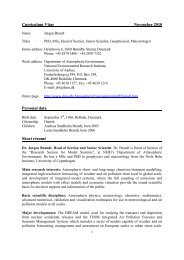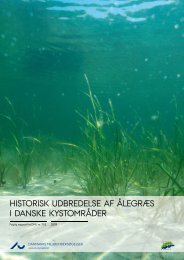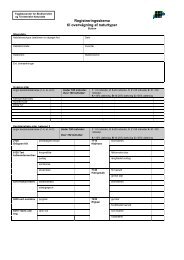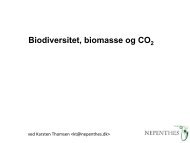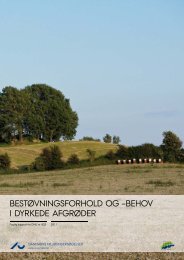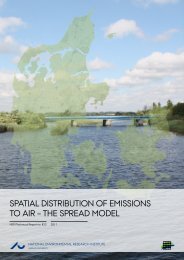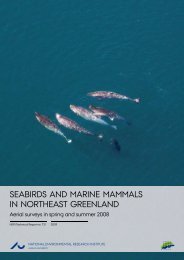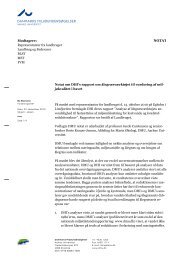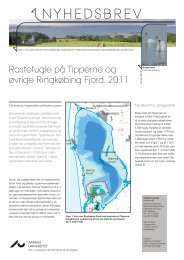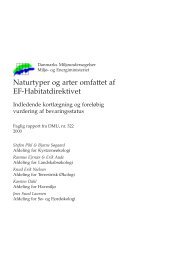Aluminiumsmelter og vandkraft i det centrale Vestgrønland
Aluminiumsmelter og vandkraft i det centrale Vestgrønland
Aluminiumsmelter og vandkraft i det centrale Vestgrønland
Create successful ePaper yourself
Turn your PDF publications into a flip-book with our unique Google optimized e-Paper software.
14<br />
Originally muskoxen were found only in Northeast and East Greenland,<br />
and the populations found today in West Greenland originate from animals<br />
that were moved to Kangerlussuaq from East Greenland. After the<br />
introduction the population has grown very fast. In the region muskoxen<br />
are primarily found south of the airport at Kangerlussuaq. It is not likely<br />
that the population will be affected by the project, as construction activities<br />
are not expected to take place within the main habitat areas of muskoxen.<br />
However, the construction of a road and of transmission lines in<br />
Sarfartoq will affect animals in construction areas, and such new infrastructure<br />
will ease access to the area and may increase disturbance.<br />
The harlequin duck is a small diving duck that is potentially vulnerable<br />
to impact by the operation of hydroelectric plants, because it breeds at<br />
lakes and streams with clear water. However, the three large lake areas<br />
planned to be used as reservoirs for the hydroelectric plants are not harlequin<br />
duck habitat. The water is silty (melt water from the Inland Icecap)<br />
and the lakes are at high altitudes and become late ice free. Therefore<br />
it does not seem likely that the harlequin population in the region<br />
will be affected by the project. When the <strong>det</strong>ailed plans for the hydroelectric<br />
plants are known, there should be an evaluation of the potential<br />
effects, e.g. if water is moved from streams that could be harlequin duck<br />
habitat.<br />
The population of Greenland white-fronted goose is unique, because it<br />
only breeds in West Greenland. The geese arrive to Greenland in spring<br />
use specific spring staging areas, which are very important to their<br />
breeding success. Within the region only few spring staging areas are<br />
found south of Maniitsup Sermia, while north of here there are more, of<br />
which two are very important. Similar spring staging areas are not<br />
known for the Canada goose, which is the other goose species found in<br />
the region. The density of nests for both goose species is low in the region,<br />
and probably only few nests will be affected by the project. After<br />
breeding the geese gather in flocks to moult. As they cannot fly away to<br />
another area while moulting they can be very sensitive to local disturbances<br />
during this period. After moulting and until they leave<br />
Greenland the geese forage, but in that period few forage habitats will be<br />
affected by the project.<br />
It is not likely that other terrestrial bird populations in the region, including<br />
red-throated diver, great northern diver, gyr falcon, perigrine falcon<br />
and white-tailed eagle, will be significantly affected by the project.<br />
The Arctic char is very common in Southwest Greenland and is found all<br />
over in the region. When constructing and operating hydroelectric plants<br />
the discharge patterns will change and so will the conditions of the char<br />
in the lakes and streams affected. However, if a local char population is<br />
affected or even destroyed this will have consequences for local fishing.<br />
It should be studied to what extent local char populations will be affected<br />
by the project. This probably is most important to the char population<br />
in Sarfartoq.<br />
The coastal zone has unique importance to colony breeding birds (particularly<br />
thick-billed murre and kittiwake), to fish species spawning at<br />
the coast (capelin and lumpsucker) and to the harbour seal, which breeds<br />
and moults on land. These species are potentially exposed to impact by





